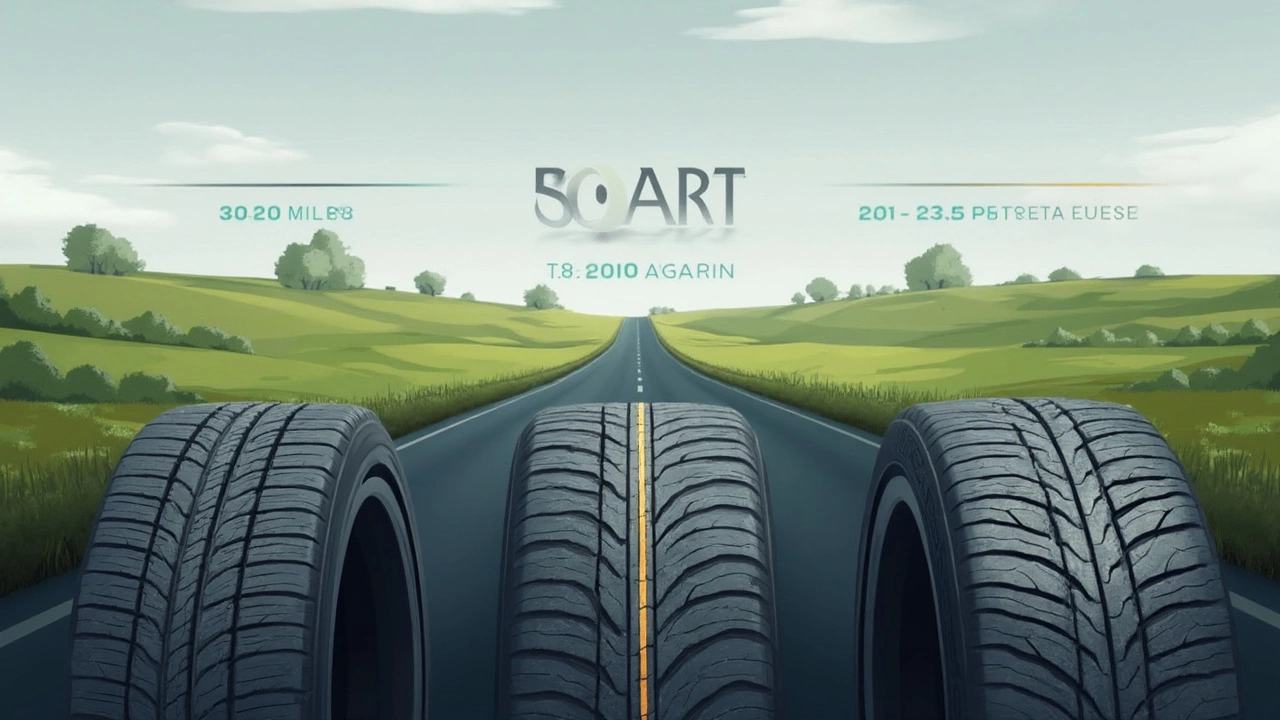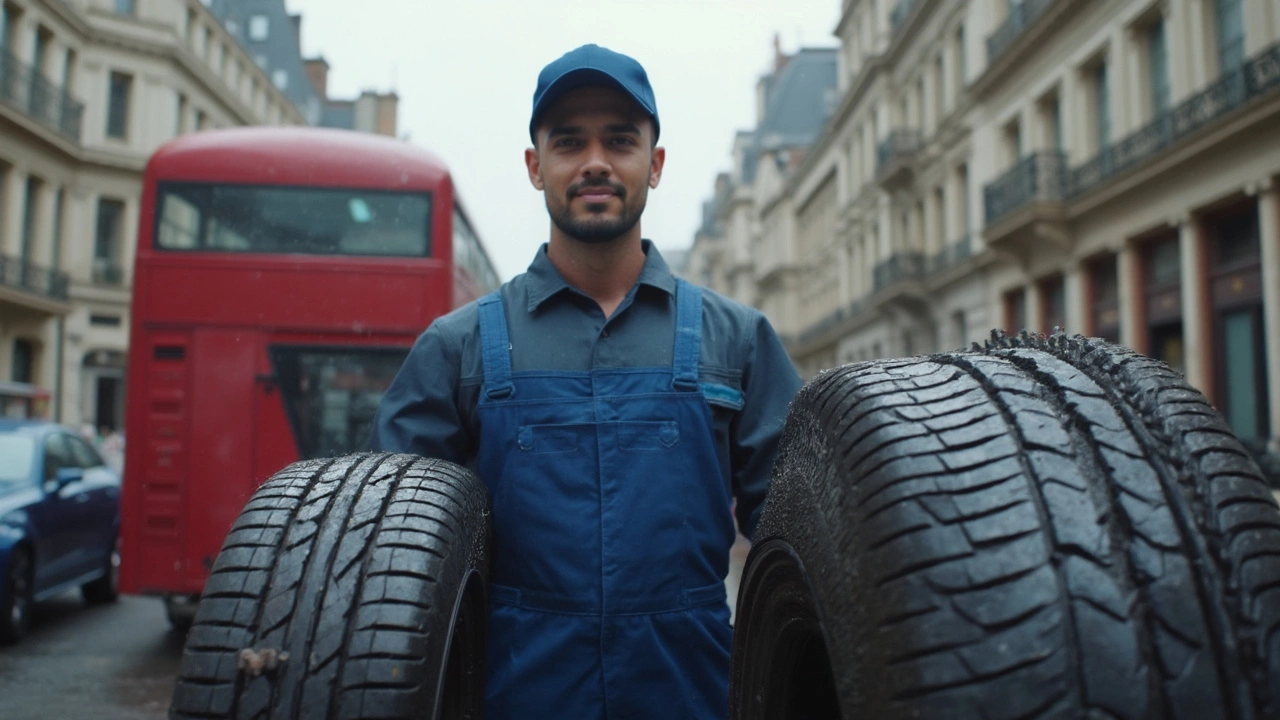Most people guess their tires need changing only when they look totally worn out, or after a nail ruins their day. But lurking danger isn't always so obvious—tire failure doesn't always knock before it barges in. Tire replacement isn't just about mileage or age; it's about safety, performance, and a bit of good sense.
Here's the safe bet: Don’t just trust the calendar or your odometer. Weather, driving habits, road conditions, and even how long your car sits in the sun all chip away at your tires. Even if you’re not racking up the miles, the rubber still ages and loses grip over time.
Are you someone who waits for the tire shop to tell you it's time? Or do you look for clues yourself, like funky handling or multiple little cracks in the sidewall? Knowing when to replace tires means having a quick routine check—it's faster than brewing a decent cup of coffee, and it might just save your life.
- What Affects Tire Replacement Timing?
- Common Signs You Need New Tires
- Tread Depth, Age & Safety: The Real Rules
- Tips to Extend Tire Life
What Affects Tire Replacement Timing?
If you're wondering when to change your tires, a bunch of factors come into play—not just a magic number of years or miles. It's about how you drive, where you drive, and even the weather your car lives in. Tires are tough, but they're not invincible.
- Tire replacement depends a lot on mileage. Most tires last between 30,000 and 60,000 miles, but this can swing way higher or lower depending on your driving style. Lots of stop-and-go city driving wears them out faster than highway miles.
- Don't ignore the calendar. Even if your tread looks good, rubber ages and hardens. Most carmakers say to replace tires at 6 years, and professionals advise swapping out by 10 years—even if you barely drive.
- Climate hits hard. Hot weather makes tires break down faster, while cold snaps can cause early cracks—especially if your tires spend all day in the sun or freeze outside overnight.
- Check for physical damage. Running over potholes, curbs, or sharp objects means you’ll probably need new tires sooner. Even small bubbles or cracks count, because they can turn into blowouts.
- Tire quality matters. Budget tires wear faster than high-quality ones, and all-season tires typically hold up better than summer or winter-only tires if you’re not switching between sets.
Take a look at how different factors affect how long tires last. This table gives you the real-world range:
| Factor | Typical Impact on Tire Lifespan |
|---|---|
| High-speed driving & heavy braking | Reduces lifespan by 20-30% |
| Hot climates | Reduces lifespan by 10-20% |
| Low annual mileage (less than 5,000mi/yr) | Rubber may age out before tread wears out |
| Cheap tires | May wear out 20% faster |
| Regular tire rotation & maintenance | Can extend life by up to 20% |
So next time you glance at your tires, remember—age, mileage, and how (and where) you drive all play a big role. Don't forget to peek at the manufacturing date on the tire’s sidewall: it's in the last four digits, where '2319' means the tire was made in the 23rd week of 2019. If it’s been several years since that date, it’s probably time to think about new rubber, no matter how they look.
Common Signs You Need New Tires
Spotting when you need new tires doesn’t take a mechanic—just a sharp eye and a few minutes. Here’s how you can stay ahead of those sneaky tire problems before they turn into a roadside drama.
- Tire replacement becomes urgent when your tread depth drops below 2/32 of an inch. You can use a penny for a quick check: put Lincoln’s head in your tread, and if you see the top of his head, your tires are worn out.
- Cracks in the rubber, called dry rot, show up as tiny lines or splits on the sidewall. These mean the tire is getting old or has suffered from too much sun or not enough use.
- Bubbles or bulges on the side of your tire, even small ones, are red flags. These weak spots can burst without warning, especially during highway drives.
- Constant loss of air or needing to top off the pressure more often than usual could point to a hidden puncture or rim damage—both are signals your tire might be on its last leg.
- Shaking or unusual vibrations in the steering wheel, especially at certain speeds, are often caused by tires that are out of shape, worn unevenly, or have internal damage.
One underrated tip: check all four tires, not just the fronts. The rear ones wear differently, and sometimes you’ll find more damage in the back than up front.
Here’s a quick table to help you spot signs and what they usually mean:
| Sign | What It Means | Risk Level |
|---|---|---|
| Tread below 2/32” | Poor grip, longer stopping distance | High |
| Cracks in rubber | Aging tire, dry rot | Medium |
| Bubbles or bulges | Weak spot, possible blowout | Extreme |
| Random air loss | Hidden puncture or leak | Medium |
| Vibrations | Internal damage or uneven wear | Medium to High |
Don’t ignore these warnings. Even if your tires still look sort of okay, one bad spot can spell trouble. Focus on these details every couple of weeks, and you’ll stay a step ahead of costly breakdowns and unsafe rides.

Tread Depth, Age & Safety: The Real Rules
If you only remember one thing about tire replacement, let it be this: tread depth and age both matter—ignore either one, and you’re taking a risk.
Let’s start with tread depth. New tires usually have around 10/32 of an inch of tread or a bit more. Once they get down to 2/32" or less, they’re legally worn out in most states. Honestly, don’t wait that long. Hydroplaning and stopping distance get way worse as you get close to that minimum. Lots of tire pros and carmakers suggest swapping them out once you hit 4/32"—especially if you drive in the rain or snow.
- If the top of Lincoln’s head is fully visible on a penny inserted head-first in your tread, it’s time for new tires.
- Use a quarter for a more conservative test: if you see all of Washington’s head, you’re below 4/32" and should shop for replacements.
Now, about age. Even if your tread still looks good, rubber breaks down slowly—exposure to heat, sunlight, and plain old time do the damage. Most experts, including the U.S. National Highway Traffic Safety Administration (NHTSA), recommend replacing tires every six to ten years—period. Don’t push your luck, even on that spare sitting in your trunk looking brand new.
| Factor | Recommended Limit |
|---|---|
| Tread Depth | 2/32" (legal minimum), 4/32" (safer swap-out point) |
| Age | 6 years (time for checks), 10 years (absolute max) |
Older tires are riskier even if you don’t use your car much. A study by AAA found that tires older than five years are noticeably more likely to fail—even with lots of tread left!
Here’s a quick tip: you can find your tire’s US DOT manufacture date on the sidewall. The last four digits show the week and year it was made (like 1320 = 13th week of 2020). Simple as that.
If you haul heavy loads, drive in heat, or cover rough gravel every week, check your tires more often. Aggressive driving and harsh weather eat away at tread and speed up rubber aging more than most folks imagine.
Tips to Extend Tire Life
If you want your tires to stick around for as long as possible, there are a few tricks you should definitely know. Just because a tire says it will last 60,000 miles doesn’t mean it’ll make it if you ignore the basics. Keeping them in good shape saves money and helps you avoid the headache of blowouts or sudden flats.
First rule? Check your tire pressure at least once a month and before road trips. Under-inflated tires actually wear out way faster—sometimes 25% quicker. Over-inflated? You’ll have less grip and a harsh ride. For best results, check pressure when tires are ‘cold’ (before you’ve driven more than a mile or two).
- Rotate your tires regularly—every 5,000 to 7,500 miles works for most vehicles. Your car’s manual should say, but mixing up the tire positions keeps wear even and helps hit that higher mileage.
- Get your wheels aligned if you notice your car pulling to one side or the steering feels weird. Misaligned wheels chew up tire edges fast—sometimes one tire can wear down twice as quickly as the other.
- Balance your tires, especially after hitting a pothole or curbstone. Unbalanced tires can cause annoying vibrations and lead to uneven wear.
- Watch your driving habits. Hard braking, fast acceleration, and whipping turns all grind down your tread way faster than easy, steady driving.
Driving around with a trunk full of stuff or extra cargo for no real reason? That loads up the tires and adds extra wear, so keep things light when you can. Park in the shade if possible—sunlight breaks down tire rubber over time. And if your car sits for weeks at a stretch, move it every so often; keeping the tires in one spot can create flat spots, especially in chillier weather.
Here's a quick table with some simple stats worth remembering:
| Tip | Improvement in Tire Life (%) |
|---|---|
| Keep correct tire pressure | +20-25% |
| Regular rotation | +15-20% |
| Proper alignment | +10-12% |
| Avoid harsh driving | +10-15% |
All these steps help stretch the life of your tires and keep your car running smoother. A little attention now and then pays off big down the road—literally.




